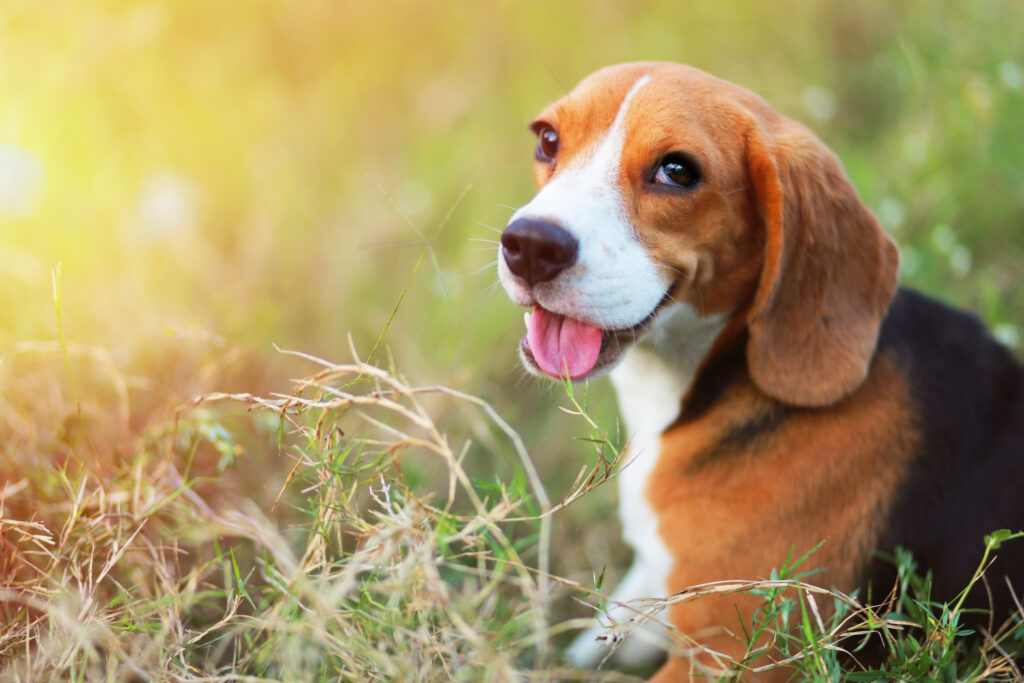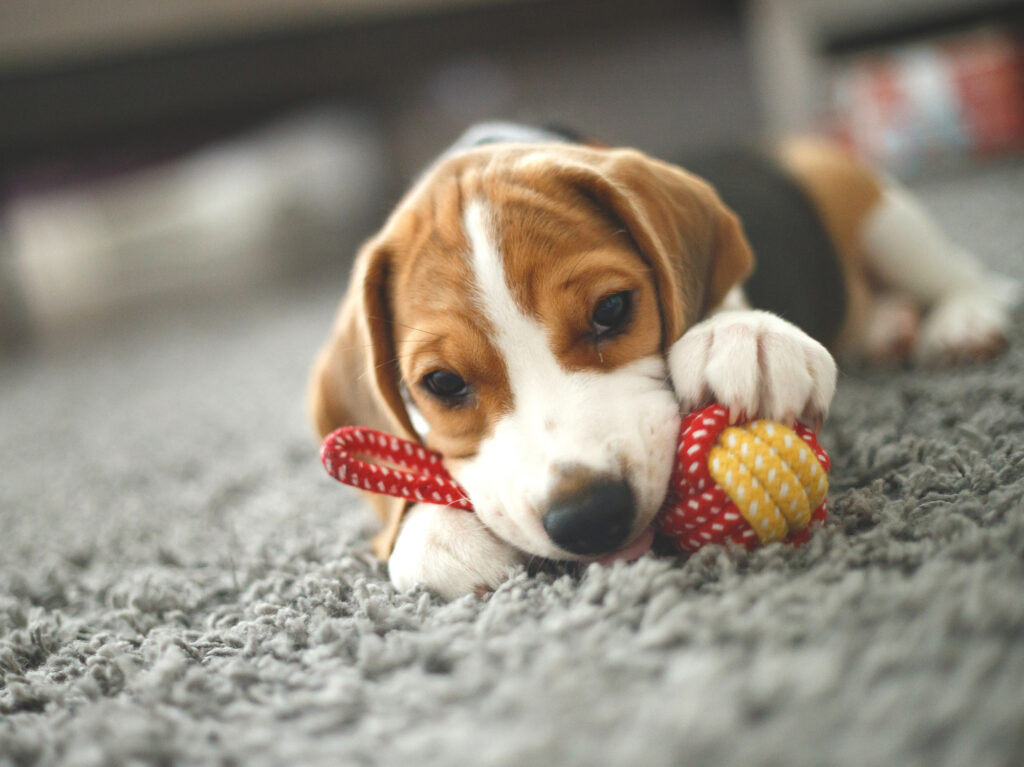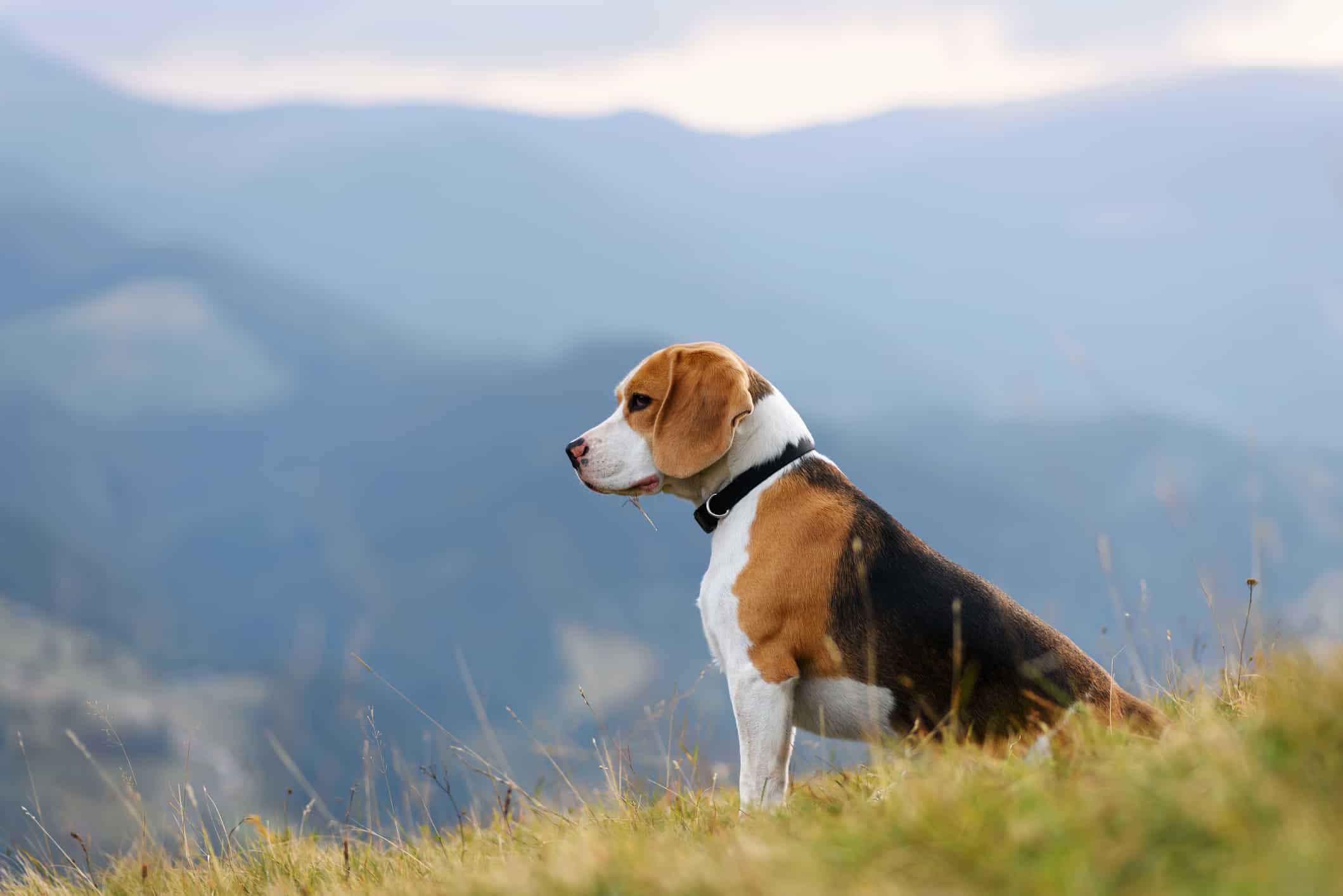So much personality in such a small dog! The Beagle is a favored breed that has managed to keep its place amongst the most popular dog breeds in the United States for the last century. Beagles have an outstanding sense of smell that makes them ideal candidates for detection, hunting or tracking.
Originally bred to be hunting dogs to catch rabbits and hares, Beagles in today’s world are mostly upholding companionship duties. With enough attention, Beagles can live a long, happy life alongside their humans.
In this article, we’ll take an in-depth look at the Beagle, study the history of the breed and its current utilization, and answer some commonly asked Beagle questions.
Beagle Breed Characteristics
- Generally, Beagles have a friendly disposition. They are curious around complete strangers and typically interact well with other dogs.
- A small to medium-sized breed, males stand between 14 and 16 inches tall and weigh 22 to 24 lbs, whilst females are 13 to 15 inches tall and weigh between 20 and 22 lbs.
- Purebred Beagles almost always have white in their tails – usually towards the tip.
- Beagles are very independent dogs and are harder to train than some other breeds. This means that training can often take longer than expected.
- Beagles are very vocal dogs – they will be sure to let you know when they want something. They also make great watchdogs, but they aren’t well-equipped to be guard dogs, due their friendly nature and small stature.
- Like other hound dogs, the Beagle has an extremely sensitive sense of smell. They tend to follow their noses more than anything – at times, even more than their human’s commands.
- There is a muscular, athletic body underneath their smooth and dense coat that needs plenty of physical activity.

History of the Beagle
The exact origins of the Beagle are unknown. In medieval times, any small hound dog was referred to as a beagle. The miniature types of these dogs were highly favored among the royalty. Queen Elizabeth I enjoyed the company of Pocket Beagles, which she called ‘singing beagles’. She often entertained her guests at the royal table by letting the dogs munch on the scraps left on the plates and cups.
These dogs resembled the Pocket Beagle as we know it today. The modern breed’s development is thought to originate from the North Country Beagle pack formed by Reverend Phillip Honeywood and the Southern Hounds from England. Like the smaller hounds, North Country Beagles were small, around 10 inches tall.
During the 1840s, the breed’s development continued, and soon the breed standard was set. John Henry Walsh described the breed as resembling the Southern Hound but smaller, with more beauty.
The earliest Beagles were imported to the United States in the 1830s whilst the breed’s development continued. This is why it is said that they weren’t domesticated until the late 1870s. The American Kennel Club recognized the breed in 1885, and from 1953 to 1959, the Beagle became the most popular dog breed in the United States. The breed remains one of the most popular dog breeds in North America – and indeed, across the globe – to this day.
Current uses of the Beagle
Nowadays, Beagles mostly take on the duties of a companion dog. The affectionate nature of the breed makes them any family’s love bug. In fact, the larger the family, the happier the Beagle.
They are excellent with kids and bond with them very quickly. Still, Beagles and young children shouldn’t be left without supervision as Beagles tend to be a little rough when playing. It is essential to properly socialize the Beagle during puppyhood so that they know their limits.
Other than being a great family dog, other traits of the Beagle make them useful for specific jobs.
Being a scent hound that hunted rabbits and hares, they follow their noses more than anything. This makes them an excellent breed for detection work. The US Department of Agriculture even has a Beagle Brigade that inspects luggage at airports in search of agricultural products. The breed’s incredible sense of smell, small size, and adorable look make it the perfect fit for airports. Because of their smaller size, Beagles aren’t usually utilized in explosives detection as this frequently requires dogs to climb.
Overall, the Beagle is a dog breed with an incredible sense of smell, is affectionate and caring towards their humans, friendly to strangers, and makes a fantastic pet.

Beagle FAQs
How fast can a Beagle run?
Beagles are certainly not the fastest compared to all dogs, but are among the quickest compared with other small to medium-sized breeds. They can reach speeds of 20 mph and maintain their momentum for long periods.
How do you clean a Beagle's ears?
Beagles have floppy ears that block airflow into the ears. If not cleaned regularly, ear infections are inevitable. Some ear infection symptoms include rubbing and scratching the ear, head tilting, and unpleasant smells. If you notice these, it might be best to schedule a visit to the veterinarian.
If you intend to clean your Beagle’s ears yourself, start by squeezing a little cleaning solution for dogs into the ear canal. With the ears down, massage the base of the ear gently. Using a cotton ball, clean all the visible wax, debris, and remnants of the ear cleaning solution. Clean your Beagle’s ears once every two to three weeks to reduce the likelihood of ear infections.
How much food should a Beagle eat?
Adult Beagles need about 45 calories per pound of bodyweight, which equals roughly one cup of food per day. For puppies, this can be two cups of puppy food. You can consider increasing or decreasing the amount of food depending on their activity level for that day. Nonetheless, one cup of adult dog food for mature Beagles and two cups of puppy food are enough for Beagle pups.
What size crate is appropriate for a Beagle?
An appropriately sized crate is vital for training and the dog’s comfort. When potty training your Beagle, a crate that is either too big or too small will create problems. Not just for Beagles but any other similarly sized dog breed, a 36-inch crate should be sufficient.
How much exercise does a Beagle need?
Beagles thrive on physical exercise with their humans. A minimum of 30 to 40 minutes of daily walks is recommended to keep an adult Beagle healthy. In addition to physical activity, playing brain games like hiding their favorite treats to keep them mentally stimulated is equally important.
How many puppies can a Beagle have?
In a single litter, a Beagle can have anywhere from just one puppy to all the way up to ten. The litter size in Beagle mothers tends to stay consistent. For example, if a Beagle has a small litter, the chances are the next one is also going to be small.
What is a Pocket Beagle?
The true Pocket Beagles became extinct around the late 19th century. The Pocket Beagles we have today are essentially a more petite version of the standard Beagle. They are much smaller in size, standing at 8 to 12 inches tall and weighing ten to fifteen pounds. Pocket Beagles have similar traits and temperaments as the standard Beagle, aside from their size differences.
Read more in this series:
- About The Breed: Basset Hound
- About The Breed: Bloodhound
- About The Breed: Bulldog
- About The Breed: Chihuahua
- About The Breed: Dachshund
- About The Breed: French Bulldog
- About The Breed: German Shepherd
- About The Breed: Greyhound
- About The Breed: Golden Retriever
- About The Breed: Labrador Retriever
- About The Breed: Pembroke Welsh Corgi
- About The Breed: Pomeranian
- About The Breed: Poodle
- About The Breed: Pug
- About The Breed: Siberian Husky
- About The Breed: Yorkshire Terrier


You must be logged in to post a comment.